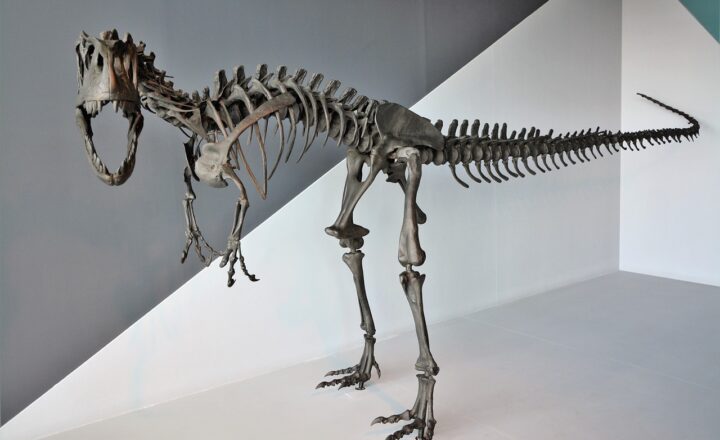How Evolution Shapes Human Creativity and Our Ability to Solve Problems
November 12, 2024

Humans have always been characterized by their capacity for creativity and complex problem-solving. From crafting tools to creating artworks and devising intricate social systems, the human mind has displayed an impressive ability to innovate and adapt. This innate creativity is not just a byproduct of culture or education; it is deeply rooted in our evolutionary history.
In this article, we will explore how evolution has influenced human creativity and problem-solving abilities, delving into the cognitive and environmental factors that have shaped this unique aspect of our species.
1. Understanding Evolution and Its Role in Creativity
To comprehend the relationship between evolution and creativity, it is essential to recognize that humans are products of millions of years of adaptation to changing environments. Evolutionary psychology suggests that our cognitive faculties, including creativity, have been shaped by the need to survive and thrive.
The theory of natural selection posits that traits aiding survival are more likely to be passed on to future generations. Creativity, in this context, can be viewed as an adaptive trait. Individuals who could think outside the box, generate new ideas, and solve problems were more likely to survive, gather resources, and attract mates.
Some specific ways evolution has fostered creativity include:
- Enhanced Brain Capacity: Just as adaptations emerged for physical traits, so too did changes enhancing cognitive abilities. Our expansive brains allow for sophisticated thinking and abstract reasoning, key components of creativity.
- Social Interaction: As a social species, human beings have evolved to work in groups. Collaboration and communication are vital for problem-solving, allowing ideas to be shared, refined, and expanded upon.
- Flexibility and Adaptability: Environments in which our ancestors lived were often unpredictable and challenging. Mental flexibility became crucial for adapting to new situations and creating inventive solutions to problems, reinforcing creative thinking as a valuable survival trait.
Creativity, therefore, represents an evolutionarily advantageous trait that has been essential for human survival and social thriving throughout history.
2. The Neuroscience of Creativity
Recent advances in neuroscience have provided insights into how our brain supports creative thinking. Understanding the brain’s structure and function gives us a better grasp of the creative process through an evolutionary lens:
- Divergent vs. Convergent Thinking: Creative thought involves two primary processes: divergent thinking (generating multiple ideas) and convergent thinking (narrowing down options to reach a single solution). Evolution has likely selected for a balance of both to address complex problems effectively.
- Brain Networks: Research has identified key brain networks involved in creativity: the default mode network (active during daydreaming and mind-wandering) and the executive control network (involved in focused problem-solving). Evolution has optimized these networks to enhance creative output, supporting our ancestors’ ability to innovate in various circumstances.
- Neurotransmitters and Emotion: Creativity often thrives on emotional experiences and the ability to make connections between disparate ideas. Neurotransmitters like dopamine play a crucial role in creative thinking and have likely influenced our evolutionary journey by encouraging exploration and experimentation.
In essence, the unique structure and functioning of the human brain have been shaped by evolutionary pressures, resulting in enhanced creativity that informs problem-solving across various contexts.
3. Environmental Influences on Creativity
While evolution has endowed us with intrinsic creative capabilities, the environment in which we exist also plays a pivotal role in fostering or inhibiting these traits. The interaction between our evolved nature and our surroundings is critical in shaping our creative abilities:
- Cultural Context: Different cultures encourage different forms of creative expression and problem-solving. Societies that value innovation and artistic expression cultivate environments where creativity can flourish, demonstrating that evolution works alongside cultural evolution to shape creative outcomes.
- Learning and Experience: Exposure to various ideas, experiences, and challenges builds our creative problem-solving skills. Educational systems that prioritize critical thinking and creativity can enhance individuals’ innate abilities, demonstrating the synergistic relationship between evolution and nurture.
- Technological Advancements: As technology evolves, it changes the landscape of creativity and problem-solving. Tools and platforms enable new forms of expression and enable collaboration, ensuring that human creativity continues to adapt in response to evolving challenges.
Understanding how the environment interacts with our evolutionary heritage helps explain why creativity manifests differently across individuals and contexts.
4. Case Studies: Evolutionary Creativity in Action
Throughout history, human creativity has played a crucial role in significant advancements across diverse fields. Here are a few schools of thought where evolution has influenced problem-solving and creativity:
- Artistic Expression: Human beings have engaged in artistic practices for tens of thousands of years, from cave paintings to modern digital art. These creative expressions are not just aesthetic; they reflect social contexts, beliefs, and human emotions, showcasing how our evolutionary past informs our artistic endeavors.
- Scientific Discovery: Many innovative scientific discoveries arise from creative problem-solving: the invention of the wheel, the understanding of gravity, DNA structure, and technological breakthroughs. Each represents humanity’s ability to creatively adapt and redesign solutions to complex challenges, demonstrating the powerful interplay between evolutionary history and scientific inquiry.
- Social Innovations: Over time, humans have created intricate social systems and structures: from governments to economic models and education systems. These constructs often arise from a need to solve societal challenges creatively, illustrating how our evolutionary drive for survival influences the way we organize and innovate as a species.
These case studies highlight how human creativity, shaped by both evolution and environmental factors, has led to remarkable achievements throughout history.
5. Conclusion: Embracing Our Evolving Creativity
The relationship between evolution and human creativity is a testimony to our species’ unique adaptive abilities. Our cognitive evolution has endowed us with the capacity for creative thought, while the environment continually shapes and challenges us to refine these abilities further.
In an era where innovation is crucial for addressing ongoing challenges, embracing our evolutionary creativity will enable us to develop more sustainable solutions and navigate the complexities of modern life. By understanding the roots of our creative capabilities, we can foster environments that encourage imaginative thinking and collaborative problem-solving, ensuring that creativity remains a hallmark of our human experience for generations to come.
By recognizing and nurturing the creativity rooted in our evolutionary past, we can pave the way for a future where problem-solving capabilities continue to adapt and thrive.







